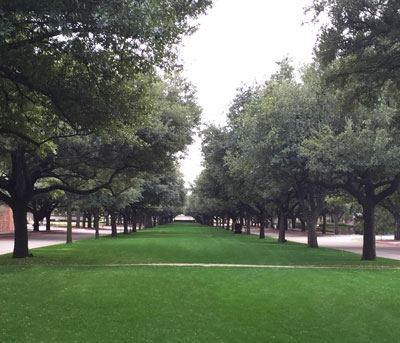Best Fast-Growing Shade Tree?

Photo: Live oaks grace the SMU campus in Dallas.
The question goes something like this: “Neil, I’m not getting any younger. I need shade soon. What’s the best fast-growing shade tree?”
That’s when I suggest that we make a list of other features that would be important in that new shade tree.
• “Fast growth. I heard what you said, so we’ll put it on our list,” I begin.
• “Good looks?” I ask. Usually the response is, “Sure. I don’t want some ugly tree in my yard.”
• “Longevity?” I ask. “Absolutely. I don’t want to have to do this again anytime soon.”
• “Adapted to our soils and climate?” I usually hear back, “Well, yes. I wouldn’t want to plant some tree that had to be pampered or that might die in the heat or cold.”
• “Resistant to insects and diseases?” I add. “Of course. I don’t want a tree I have to spray all the time.”
So then I suggest that we look at our list one more time, maybe re-prioritizing our expectations.
It’s amazing to hear the gears grind in their heads. Suddenly “fast growth” doesn’t seem so appealing. It sinks to the bottom of the list.
The truth is that fast-growing trees live hard and short lives. Each is subject to one or more fatal flaw. No exceptions. Average life expectancy among trees like silver maples, cottonwoods, mulberries, ashes, mimosas, willows, catalpas, Siberian elms, sycamores and the other speedy trees is probably 15 or 20 years. A few live longer, but many die young.
The best shade trees for broad bands of Texas include live oaks, Shumard red oaks, chinquapin oaks, bur oaks, cedar elms, pecans and Chinese pistachios. Given good and consistent care, these trees will grow two-thirds as fast as the “trash” trees, but they’ll live 20 times longer with far fewer problems. For the record, southern magnolias are equally good, but they truly are slower growing.

